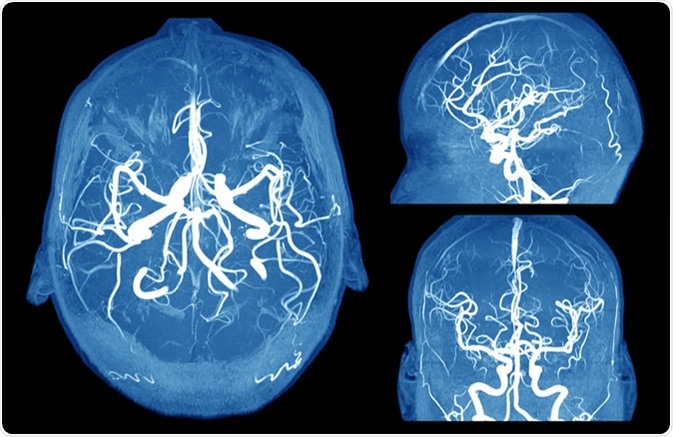Skip to:
- Brain Aneurysm
- Migraine
- Knowing which one is which
A sudden and severe headache coupled with sensory sensitivity (e.g. photosensitivity) and feelings of nausea can be both debilitating as well as a cause for panic or concern.
The causes of such symptoms can be attributed to either a migraine, or a brain aneurysm/stroke. The two conditions are very different: aneurysms are a medical emergency, while migraines are not life threatening and can be managed.
Brain Aneurysm
An aneurysm refers to the bulging in the wall of an artery in the brain where the blood vessel wall has been weakened. When these weak spots rupture (a form of stroke), they cause severe symptoms including:
- Sudden agonising headache (unlike anything you’ve experience before)
- Stiffness of the head and neck
- Photosensitivity (pain when looking at lights)
- Pain above or behind the eye
- Weakness or numbness in one side of the body or limbs
- Vision problems such as blurred or doubled vision
- Nausea and or vomiting
- Drooping eyelid
- A dilated pupil
- Some people may suffer from seizures or loss of consciousness

Around one in fifty people in the United States has an unruptured brain aneurysm. These typically do not result in any noticeable symptoms and grow slowly.
In some rare cases people experience symptoms when an unruptured aneurysm is large and presses on the nerves or tissue of the brain these can include visual disturbances, pain around the eye, moderate and persistent headache, loss of balance and difficulty concentrating.
As there are usually no noticeable symptoms leading to a rupture, this is a particular challenge as many people may be unaware of the presence of an aneurysm.
A ruptured brain aneurysm leads to a major form of stroke called subarachnoid haemorrhage and is a medical emergency: over half of patients die within two weeks after rupture. Survivors are often left with permanent severe brain damage.
A brain aneurysm therefore is a medical emergency and needs to be treated as quickly as possible. Treatments can involve open surgery or endovascular therapy that could include coils, stents or a flow diversion device.
Migraine
Migraines are moderate to severe headaches which are usually experienced as a throbbing pain typically on one side of the head.

Migraines are more commonly reported by women than men. Unlike a normal headache, migraines have more complex mechanisms and, in some cases, an ‘aura’ may appear before a migraine begins. Though more commonly, a migraine appears without any warning signs.
Specific symptoms of migraine include:
- Throbbing pain usually on one side of the head, though both sides and neck can also be involved in some cases
- Nausea – feeling or being sick
- Sensory Sensitivity – increased sensitivity and pain to lights and sounds
- In some cases, migraines can appear without a headache but exhibit every other symptom.
Migraines can last up to three to four hours, although in some cases they may last for up to three days. The after-effects of migraines can also last for much longer and are usually characterised by fatigue. Anti-inflammatories such as ibuprofen can mitigate the symptoms of a migraine, though sometimes individuals may be prescribed specific medications.
Knowing which one is which
Knowing the difference between an aneurysm and a migraine could be the difference between life and death. Patients need to know the difference between migraines and aneurysms as many of the symptoms overlap and a delay in seeking treatment could be fatal.
However, the defining feature of an aneurysm is a headache like no other, or the worst pain you have ever experienced. Another key defining feature is that the pain associated with an aneurysm is usually very sudden and like a ‘thunderclap’.
If you experience sudden and excruciating pain in your head and neck, it is advisable to seek emergency help irrespective of whether you are a regular migraine sufferer or not.
Sources:
- NHS.uk (2019) Brain Aneurysm. https://www.nhs.uk/conditions/brain-aneurysm/
- NHS.uk (2019) Migraine. https://www.nhs.uk/conditions/migraine/
- Brain Aneurism Foundation (2019) https://bafound.org/brain-aneurysm-awareness/
Further Reading
- All Brain Aneurysm Content
- All Migraine Content
- What are Migraines?
- Migraine Diagnosis
- Migraine Pathophysiology
Last Updated: Sep 23, 2019

Written by
Osman Shabir
Osman is a Neuroscience PhD Research Student at the University of Sheffield studying the impact of cardiovascular disease and Alzheimer's disease on neurovascular coupling using pre-clinical models and neuroimaging techniques.
Source: Read Full Article
